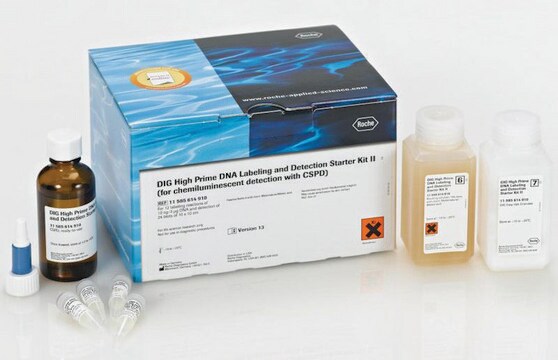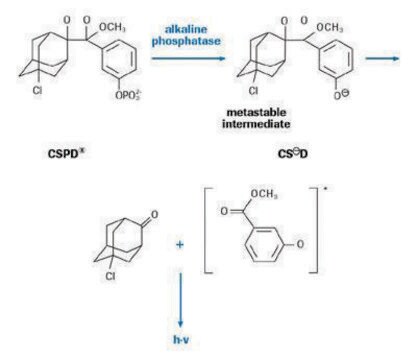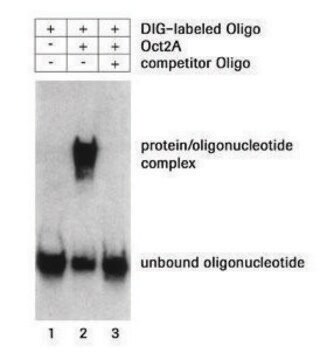11093657910
Roche
DIG DNA Labeling and Detection Kit
Sinônimo(s):
dna labeling and detection kit, dig
About This Item
Produtos recomendados
uso
sufficient for 25 labeling reactions
sufficient for 50 blots
Nível de qualidade
fabricante/nome comercial
Roche
características do produto alternativo mais ecológico
Designing Safer Chemicals
Learn more about the Principles of Green Chemistry.
sustainability
Greener Alternative Product
categoria alternativa mais ecológica
, Aligned
temperatura de armazenamento
−20°C
Descrição geral
Contents:
- Unlabeled Control DNA 1, 100 μg/ml
- Unlabeled Control DNA 2, 200 μg/ml
- DNA Dilution Buffer
- DIG-labeled Control DNA, 5.2 μg/ml
- 10x Hexanucleotide Mix
- 10x dNTP Labeling Mixture
- Klenow Enzyme, Labeling grade, 2 U/μl
- Anti-digoxigenin-AP-conjugate, 750 U/ml
- NBT/BCIP Concentrated Stock Solution
- Blocking Reagent
Especificidade
Aplicação
- Southern blots
- Northern blots
- Dot blots
- Colony and plaque screening
Embalagem
Nota de preparo
Outras notas
Somente componentes do kit
- Unlabeled Control DNA 1 100 µg/ml
- Unlabeled Control DNA 2 200 µg/ml
- DNA Dilution Buffer
- DIG-labeled Control DNA 5.2 µg/ml
- Hexanucleotide Mix 10x concentrated
- dNTP Labeling Mixture 10x concentrated
- Klenow Enzyme, Labeling grade 2 U/µl
- Anti-digoxigenin-AP-conjugate antibody 750 U/ml
- NBT/BCIP Concentrated Stock Solution
- Blocking Reagent
Código de classe de armazenamento
13 - Non Combustible Solids
Classe de risco de água (WGK)
WGK 3
Ponto de fulgor (°F)
does not flashNot applicable
Ponto de fulgor (°C)
does not flashNot applicable
Escolha uma das versões mais recentes:
Já possui este produto?
Encontre a documentação dos produtos que você adquiriu recentemente na biblioteca de documentos.
Os clientes também visualizaram
Artigos
Digoxigenin (DIG) labeling methods and kits for DNA and RNA DIG probes, random primed DNA labeling, nick translation labeling, 5’ and 3’ oligonucleotide end-labeling.
Nossa equipe de cientistas tem experiência em todas as áreas de pesquisa, incluindo Life Sciences, ciência de materiais, síntese química, cromatografia, química analítica e muitas outras.
Entre em contato com a assistência técnica







